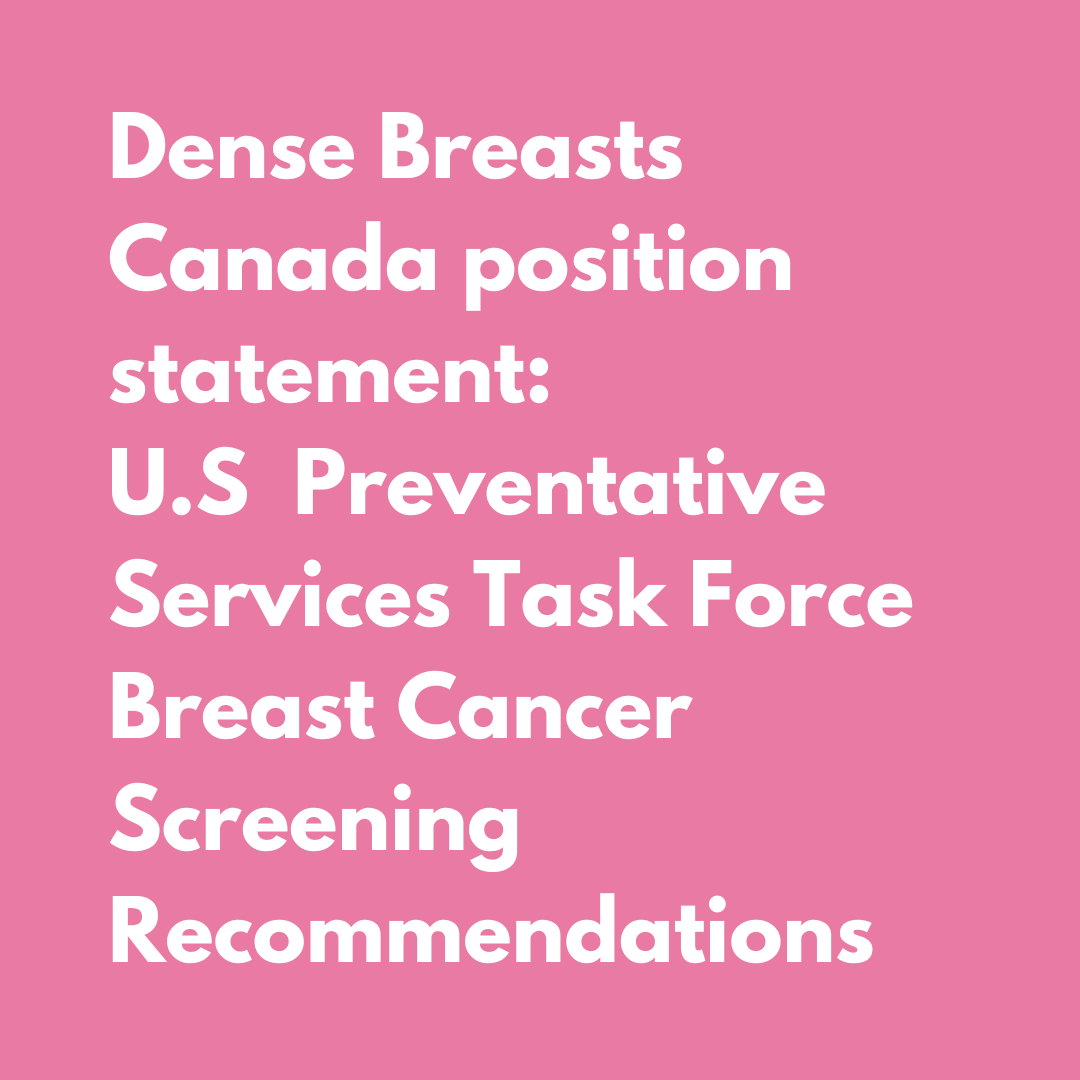
The recently released United States Preventive Services Task Force (USPSTF) Breast Cancer Screening recommendations are both exciting and disappointing.
The good news is the US Task Force recommended screening mammograms begin at age 40, instead of 50, for women of average risk. The US Task Force provided various reasons for the change including: an increase in the incidence of cancer in women in their 40s; new and more inclusive science about breast cancer in people younger than 50; and the rise in Black women being diagnosed with breast cancer at younger ages. For these same reasons, Dense Breasts Canada (DBC) is calling on Canada’s guideline body – the Canadian Task Force on Preventive Health Care – to similarly recommend screening beginning at age 40 for all average-risk women. Mammograms for this age group should be provided annually to save the most lives.
Breast cancer is the most commonly diagnosed cancer and the second leading cause of cancer-related death among Canadian women. In Canada, 17% of breast cancers occur in women aged 40-49. Women aged 40-49 who have mammograms are 44% less likely to die of breast cancer than women who do not. Early detection is critical. Survival at 5 years of stage 1 breast cancer is 99%, while it is 23% for stage 4 cancers.
Despite the Canadian guidelines, four jurisdictions allow self-referral for a mammogram at 40: British Columbia, Nova Scotia, PEI, and Yukon. Alberta starts at 45. In other jurisdictions, women in their 40s wanting screening need a requisition from their health care provider. While the Task Force stated that the decision to screen is a woman’s, some family doctors and nurse practitioners are not providing the necessary requisitions. By lowering the screening age to 40, all Canadian women would be able to self-refer and have more equitable access to early detection.
DBC’s disappointment in the US Task Force recommendations is twofold: mammography screening should be done annually, especially in younger women because their cancers grow faster than in post-menopausal women, and because of the lack of recognition given to the risks of dense breasts. The Task Force considers women with dense breasts to be average risk for developing breast cancer; they are not. Women with dense breasts have an increased risk of breast cancer and are at increased risk that a cancer will be hidden by dense breast tissue. The US Task Force stated there is inadequate evidence to support additional screening in women with dense breasts. This is not true. Adequate evidence has existed for decades.
In Canada, supplemental screening for women with dense breasts is most easily accessible in British Columbia and Alberta. Ontario has recently drafted a recommendation to provide additional screening for women with the highest density. We have a way to go for equitable access to supplemental screening across the country.
While we hope that the new US recommendation to lower the screening age may provide the impetus needed to do the same in Canada, we are still a long way off. A review of evidence for Canadian guidelines will begin this summer. DBC will continue to advocate for optimal screening for all women. We look forward to the day when all women in Canada can access the screening they need to have the best chance of early detection of breast cancer.
